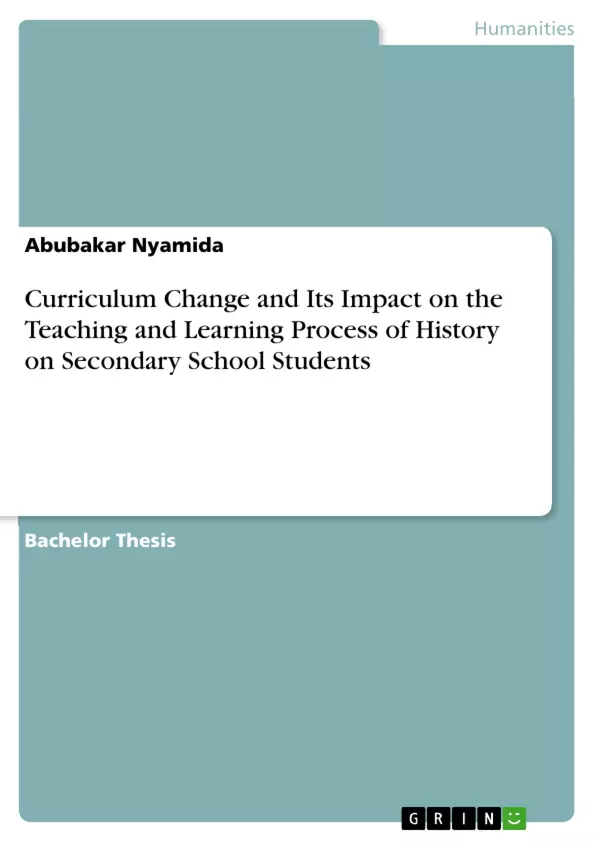The purpose of the study was to examine the effects of the curriculum changes in teaching and learning history in secondary schools within Jos South Local Government Area of Plateau State. Specifically the purpose of the study are: 1. To determine if curriculum change in history require changes in teaching methods? 2. To examine the effects of curriculum change on history teachers’ mastery of subject matter. 3. To assess the effect of curriculum change on the availability of teaching and learning materials.
The teaching of history as a discipline has a long tradition in the world and it is instrument par excellence for national development according to National Policy on Education and forging international cooperation and integration. History as a subject falls within the General Arts, and has for a long time, enjoyed a place in many African school curriculum especially Nigeria. The teaching of history in Nigeria could be traced informally to the pre-colonial days when parents and elderly persons recounted the past of their communities to the younger generation through folktales, music, and other art forms. These were chief means of conveying invaluable lessons and values that were highly cherished in traditional societies. The teaching of history took a formal turn in the colonial period when it was taught in the schools established by the missionaries and those established by the British colonial officials.
Table of Contents
- CHAPTER ONE: INTRODUCTION
- BACKGROUND OF THE STUDY
- STATEMENT OF THE PROBLEM
- PURPOSE OF THE STUDY
- RESEARCH QUESTIONS
- SIGNIFICANCE OF THE STUDY
- DELIMITATION OF THE STUDY
- OPERATIONAL DEFINITION OF TERMS
- CHAPTER TWO: LITERATURE REVIEW
- THE CONCEPT OF HISTORY
- CONCEPT OF CURRICULUM
- HISTORY EDUCATION CURRICULUM AND NATIONAL DEVELOPMENT
- EDUCATIONAL CURRICULUM CHANGE
- NEW SECONDARY SCHOOL CURRICULUM IN NIGERIA
- CURRICULUM CHANGE AND ITS IMPLEMENTATION
- CHALLENGES IN IMPLEMENTING NEW SECONDARY SCHOOL CURRICULUM IN TEACHING AND LEARNING HISTORY IN NIGERIA
- CHAPTER THREE: METHOD AND PROCEDURE
- RESEARCH DESIGN
- POPULATION AND SAMPLE
- SAMPLING TECHNIQUE
- INSTRUMENTS FOR DATA COLLECTION
- VALIDITY AND RELIABILITY OF INSTRUMENTS
- PROCEDURE FOR DATA COLLECTION
- METHOD OF DATA ANALYSIS
- CHAPTER FOUR: RESULTS AND DISCUSSION
- PRESENTATION OF BIODATA VARIABLES
- RESPONSES TO QUESTIONNAIRE AND INTERVIEW
- DISCUSSION OF FINDINGS
- Arbeit zitieren
- Abubakar Nyamida (Autor:in), 2020, Curriculum Change and Its Impact on the Teaching and Learning Process of History on Secondary School Students, München, GRIN Verlag, https://www.grin.com/document/889321



